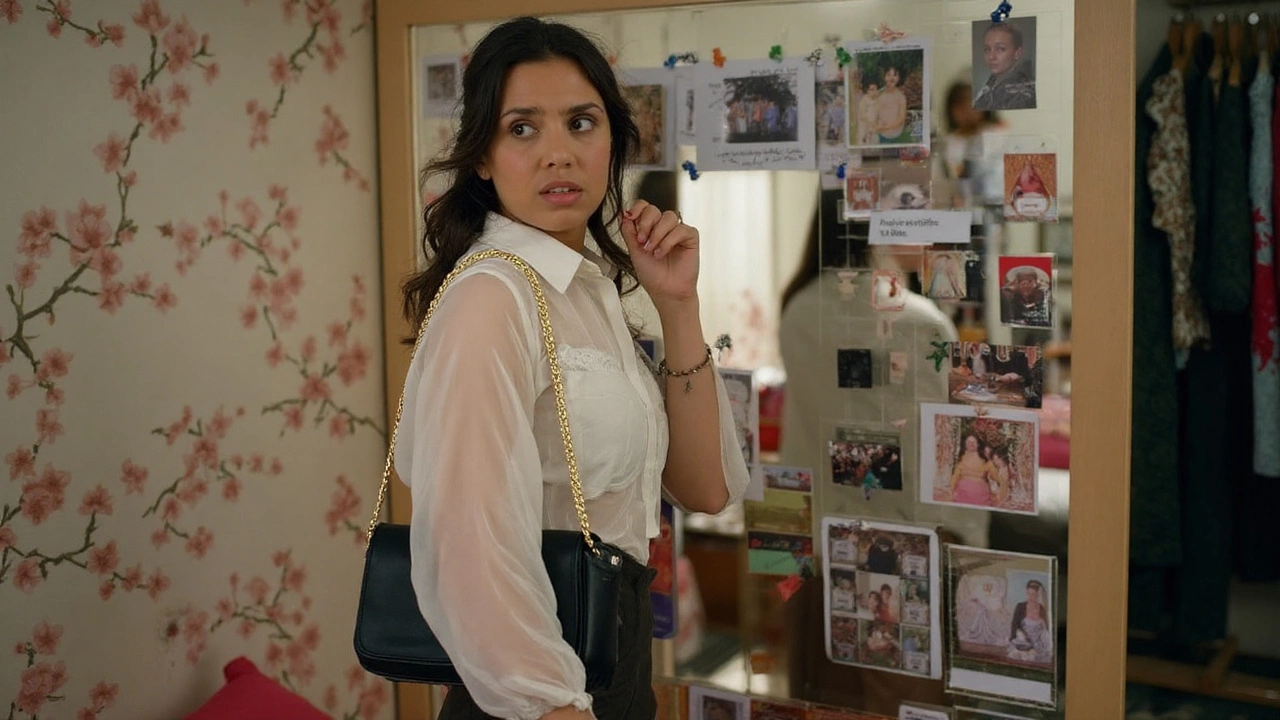A breakout hit hits the brakes. Prime Video has put Mr. & Mrs. Smith Season 2 on indefinite hold, stalling a spy series that scored big with critics and viewers and ended on a nerve‑jangling cliffhanger. The pause isn’t a minor hiccup—it’s a full stop with no new start date, and it’s tied to two stubborn problems: casting and calendars.
Why the shutdown happened
The biggest sticking point is the cast. Season 1 centered on Donald Glover and Maya Erskine as married operatives navigating missions and matrimony. For Season 2, the creative team explored new leads, according to people familiar with the process. Names like Lily-Rose Depp and Gael García Bernal surfaced in trade chatter, but no deals were closed. Until contracts are signed, scripts stay flexible, locations can’t be locked, and every other department is left waiting.
This is more than picking the right faces. For a high-wire show built on chemistry, the two leads shape the tone, the stunt load, the schedule—and the budget. Agents want firm dates and creative clarity before committing their clients. Production wants firm faces before building sets and booking stages. When both sides hesitate, time slips.
There’s also a leadership puzzle. Francesca Sloan, who co-created the series with Donald Glover, is under an overall deal at HBO and is working on Season 3 of Big Little Lies. That’s a win for her career, but it complicates the calendar. Overall deals often include carve-outs for outside projects, yet those carve-outs depend on timing. If Season 2 can’t start when a carve-out window opens, the window closes, and the schedule moves again.
Here’s how that ripple spreads. Casting can’t be final without dates. Dates can’t be final without the showrunner’s availability. Writers can polish scripts, but production design, stunt planning, and location scouting only ramp up when the lead actors are in place. Miss a block of stage time or a location permit window, and you start over.
The delay is frustrating because the show earned its runway. Season 1 landed a 90% approval on Rotten Tomatoes, easily topping the 2005 Brad Pitt–Angelina Jolie movie’s 60%. Inside Amazon, the series is counted among the most-watched titles on Prime Video, the kind of performance that usually buys momentum. Instead, momentum met logistics.
The creative stakes are high too. The first season ended with gunshots and a blackout on the fates of John and Jane. That cliffhanger wasn’t a gentle tease; it set up a second chapter with emotional fallout and operational consequences. Leaving that hanging risks eroding fan energy if the gap stretches too long.
What does “indefinite delay” mean in practice? It’s industry shorthand for “we’re not rolling cameras until the blockers clear,” not a secret cancellation. Productions hit this patch when key elements—casting, dates, creative sign-offs—don’t line up. Sometimes the clouds part fast. Sometimes they don’t.
There’s another piece of context: the broader streaming cooldown. Platforms are spending more carefully, spacing out tentpoles, and avoiding half-starts. For a show with action set pieces, tight choreography, and high production values, Prime Video will want locked leads and a stable calendar before releasing funds for pre-production at full speed.
If you’re wondering why reports focused on new faces, here’s why that matters. An anthology-style pivot—new couple, same universe—is one way to keep a spy marriage concept fresh. It also changes the risk profile: the show rises or falls on whether the next pairing sparks. That raises the bar for casting. If the team can’t secure the exact duo they want, it may be safer to hold than to hurry.
Behind the scenes, the holds pile up. Coordinators can’t book fight trainers until lead schedules are set. Wardrobe can’t build signature looks without fittings. Second-unit can’t plan chase sequences without the actors’ heights and stand-in profiles. Even music supervision stalls if character tone is still in flux. A delay like this isn’t just the leads—it’s a chain reaction.
As for Donald Glover’s role this time around, he remains a co-creator and executive producer. Whether he returns onscreen or stays behind the camera hasn’t been locked publicly. That ambiguity feeds fan theories but doesn’t help scheduling. The production needs a yes or no for every key part before it can nail down dates.
Season 1’s success pushed expectations higher. The show’s blend of deadpan humor, quiet intimacy, and brutal missions made it stand out in a crowded spy field. Guest appearances became viral moments. The New York settings and globe-trotting bursts gave it scale without losing the couple-as-mission core. That identity won’t be tossed easily, which is why the team is being choosy about who carries it next.
Timing-wise, the original plan called for a fall 2025 production start. With that window gone, any new schedule would need runway for prep (typically months), shoot (often several months for an eight-episode season with action), and post (VFX, sound, color). Best case, if casting clicks soon, the show could still be many months from set to screen. Worst case, it slips a full cycle.
Meanwhile, there’s the cliffhanger problem. Long gaps after big endings can help if the payoff is huge. They can also cool a fandom if communication goes quiet. Studios often bridge that gap with development updates, but Prime Video hasn’t announced a fresh timeline yet.
- What’s confirmed: Season 2 is delayed indefinitely. Casting for the next chapter isn’t finalized. Francesca Sloan’s HBO commitments complicate scheduling.
- What’s likely: Prime Video wants the series back—it’s a proven draw—but won’t move without the right cast and a clean calendar.
- What’s unknown: The exact format of Season 2, who will lead it, and when cameras will roll.
Is this fixable? Yes. These snags are common on star-driven series. It takes a cleared calendar for the showrunner, two leads who can anchor the story, and dates that work for the department heads. Once those pieces lock, machinery that’s been idling can scale up fast.
If the production lands its duo soon, a likely sequence would be: final scripts locked; table reads; stunt and intimacy rehearsals; location bookings; then a staggered shoot with second-unit grabbing action while first-unit handles dialogue-heavy scenes. If the leadership remains stretched, the show could bring in an additional executive producer or producing director to keep day-to-day moving. That’s a common workaround when schedules clash at the top.
There’s also the question of tone. If Season 2 shifts to a new couple, the writers can play with different dynamics—older marriage vs. new love, a long-distance setup, or a mismatched skill pairing. That creative choice affects everything from fight styles to banter rhythms. Getting the pairing right isn’t just about star power; it’s about story math.

What it means for the timeline
With no official restart date, realistic windows hinge on when the last piece falls into place. A casting breakthrough in the near term could put the show back into active prep later this year. A slower process pushes any premiere window further out. If the team waits for Big Little Lies to wrap a season, the second half of the year becomes more plausible for heavy lifting.
Fans looking for signals should watch for three telltales: a formal casting announcement for two leads, a showrunner availability update, and evidence of pre-production hires (stunt coordinators, costume designers, and location managers). Those moves usually hit before cameras do.
On the business side, Prime Video has every incentive to solve this. The series is one of its big engagement drivers, and spy action with relationship stakes plays well internationally. But the platform, like every streamer now, is prioritizing clean execution over rushing to fill the calendar. A messy start is more expensive than a careful delay.
If the pause stretches, expect knock-on effects. Crew members may take other jobs, forcing the production to re-staff. Sets planned for reuse could be torn down, raising rebuild costs. Music and post-production holds expire. Each reset adds dollars and time. That’s partly why studios prefer to hit confirmed windows or wait until they can.
And then there’s the audience. The first season’s last minutes—silenced gunshots, a door, unanswered questions—were built to launch another run, not end a story. The longer that answer takes, the higher the bar for the return episode. That’s pressure, but it’s also opportunity. If the team nails the casting and the opener sticks the landing, the delay becomes a footnote instead of a headline.
For now, patience is the ask. The creative team knows it has something that works. The streamer knows the numbers justify another chapter. What’s missing are the two people who’ll carry the next marriage under fire, and the calendar time to make it sing. When those lock, the rest follows.

